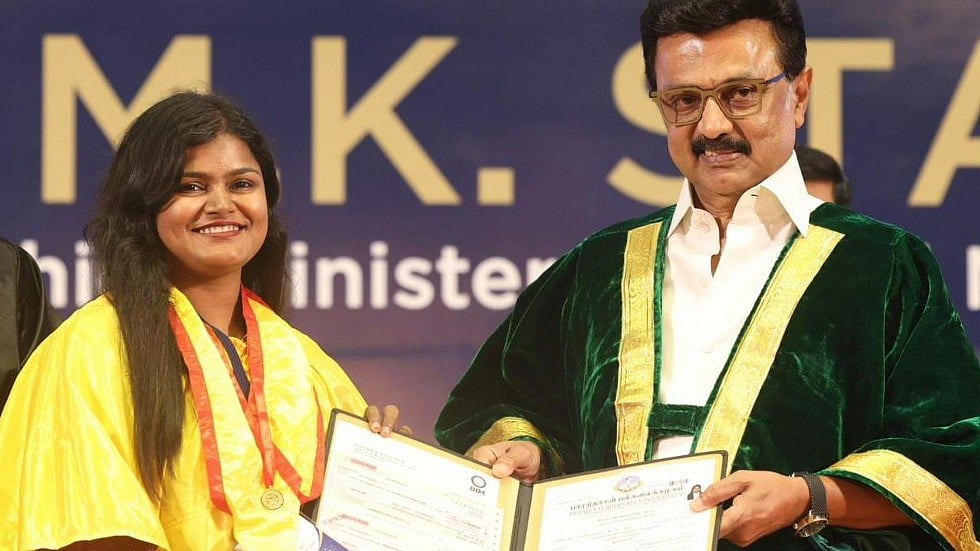(The Free Press Journal publishes articles by study abroad consultants, Consulates, foreign universities, international students, and much more every Saturday to give its readers a glimpse of the world of overseas education.)
Have you ever wondered why a student with very good academic scores did not get into the US university of their choice, while a student with lower grades was admitted to it?
The educational system in the United States is designed for the well-rounded development of students, an attribute that is also reflected in the application review process. With over 4,500 accredited higher education institutions in the United States, there are significant differences in the criteria that individual institutions use to decide whether to admit a student.
At the postgraduate level, different departments within the same university might use varying criteria when evaluating applications. That said, US universities generally use a holistic approach when evaluating applications from prospective students. This article will discuss some of the criteria that US universities use to determine whether to admit a student so that prospective students understand how to present themselves while applying.
Tests you should consider before enrolling at US universities
US universities usually require students to take an entrance test based on the level of study they wish to pursue in the United States. Students applying for undergraduate studies usually take either the SAT or the ACT exam, while students applying for postgraduate programmes usually take either the GRE or GMAT (if applying for business school).
These exams help the universities understand the academic proficiency of a student. Most US universities will also require an English test (TOEFL, IELTS, PTE, or Duolingo) to make sure the applicant has sufficient mastery of English to succeed in a US classroom.
While these tests are a good way for students to demonstrate their preparedness for studying in the United States, they are not the only academic requirement.
Student’s academic performance over the years key
Almost all institutions in the United States require a transcript (a cumulative marksheet) of the last four years of the student’s academic performance.
Students applying for undergraduate studies in the United States are required to send their scores from the 9th to 12th grade, while students applying to postgraduate programs need to send the cumulative scores from their undergraduate programme.
This information is crucial for admissions offices at US institutions to understand the academic consistency of a student and is considered a good marker for future success. U.S. institutions are aware that extenuating circumstances may affect a student’s ability to score well in exams, and these circumstances should be mentioned elsewhere in the application.
A recent example is the pandemic, when students who require in-class interaction found online learning difficult, circumstances that in turn affected their performance on exams. A long-term evaluation will give a hard-working student the opportunity to demonstrate their growth and determination. A combination of the transcripts and the entrance test scores give the U.S. university a good idea of students’ potential for future academic success.
US universities cherish students’ perspectives, thought process
Institutions in the United States value critical thinking and communication skills regardless of the applicant’s field of interest. In the application process for both the undergraduate and the postgraduate level, there is a place in the application for the student to demonstrate their personal goals and background.
This personal statement (at the undergraduate level) or statement of purpose (at the postgraduate level) is a strong component for admissions offices when evaluating an applicant. This critical document can be an excellent opportunity for students to explain their motivation for applying to the university and why the university is a good fit for them.
A well written personal statement can take weeks to write and is the only subjective portrait of the applicant. This helps the admissions offices understand applicants as people and assess whether they would be a good addition to the institution.
Letters of recommendation are usually required at both the undergraduate and the postgraduate level. In this part of the application, a student requests their teachers, counsellors, coaches, and supervisors to write about them, and the letters are submitted directly by the recommender.
Ideally the letter of recommendation should be written by someone who has known the student for a long period of time and has a strong understanding of the student’s performance and potential for success.
The letter of recommendation can also serve other purposes, such as explaining a dip in academic performance under extenuating circumstances, highlighting additional efforts the student took to overcome challenges, describing the development of interpersonal skills, competency in specific fields, or other qualities that the recommender considers valuable information for an admissions committee.
Finances, extracurricular activities, top priorities for US universities
Many institutions also require that students demonstrate the ability to pay for education at their institution. They might request that students show funds equivalent to one year of the total cost of attendance at the institution. If a student is applying for financial aid at a US university and indicates this on the application, the student’s chances of admission may be slightly reduced.
However, this is not the case at universities which have blind admissions policies (schools that do not look at financial status while reviewing applications). Participation in extracurricular activities that show interests outside the classroom can also help a student’s chance of admission to a US university. US universities prefer to see that students have participated in activities over a long period of time rather than participating in several activities of shorter duration.
At a later stage of the admissions process, some institutions may also require a video interview to determine the motivation of the applicant. For students applying for doctoral studies, proof of research capability and potential may impact applications, as will portfolios of completed work for students applying for fine arts or architecture programs.
US universities evaluate applicants in more ways than one. While each applicant is different, institutions also differ in the areas of emphasis they most value when evaluating applications. To have a better outcome when applying for higher studies in the United States, students should research the institution and its offerings and know what they hope to achieve and contribute to each particular institution.
Students should do their best to excel at coursework and on entrance exams while also writing strong essays that show their motivation and aptitude for success. This will ensure that students have the best possible chance of getting into the right university.
For more information, please visit the EducationUSA website (https://educationusa.state.gov), and for individual questions or direct counselling with an EducationUSA adviser, please write to USEducationQueries@state.gov
The author is an EducationUSA coordinator at the United States - India Educational Foundation (USIEF), Mumbai.










